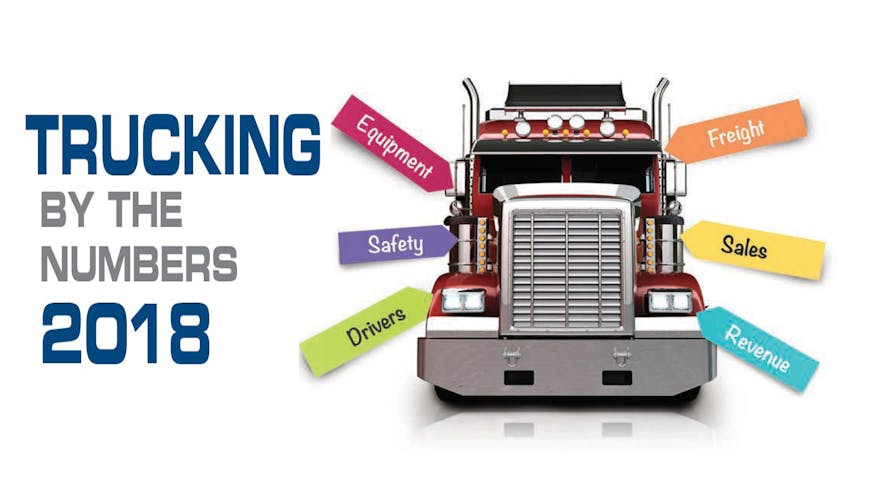In today's data-driven business environment, the trucking industry has come to both rely on—and be challenged by—a growing volume of information. For motor carriers, while data overload is a possibility, using it selectively can lead to more effective short- and long-term choices.
As an example, the industry is now experiencing what is perhaps the tightest capacity crunch in history, fed by a stronger economy and the electronic logging devices (ELD) mandate. By using data on tonnage and other freight trends across various industry segments, motor carriers and shippers can more effectively plan for the scarcity of trucks and adjust their operations to remain competitive.
Click to launch slideshow: Freight snapshot by mode, tonnage, and more along with 10-year forecast
If the success and profitability of all trucking operations is based in cost management, then data in reports like the American Transportation Research Institute's (ATRI) "Analysis of the Operational Costs of Trucking: 2017 Update" is a path to effective benchmarking practices for operations, planning and investment. With that data, trucking companies can dig deeper into per-mile and other costs, and apply sound information to decisions that impact high cost areas in their operations; for example, those for fuel and driver wages in light of the persistent driver shortage and rising fuel prices.
Data is also useful in the context of industry challenges. In its "Cost of Congestion to the Trucking Industry: 2017 Update," ATRI provides data on road congestion that enables trucking companies to analyze and offset resulting increases in operating costs, including fuel, labor, and vehicle expenses. With this information, motor carriers also have a better ability to address the stresses that congestion puts on drivers through more effective planning and operational practices.
A closer look at data can also help address challenges brought on by legislative and regulatory activity. Information on driver demographics and wages can assist fleets in more effectively analyzing how these changes alter their operations, and tackle issues related to the ongoing shortage of drivers.
Overall, handling over 70% of all freight in the U.S., the trucking industry continues to dominate freight transportation over all other modes. Total truck tonnage in 2017, including for-hire and private carrier operations, was more than 22% higher than its lowest point in 2009. Looking ahead, the ATA "U.S. Freight Transportation Forecast" projects that total freight tonnage will grow more than 40% in the next 10 years.
The latest "IHS Global Business Outlook" survey also measures expectations, and recently it recorded the strongest degree of business optimism since mid-2014. Going forward, that can only mean even higher freight volumes, and with data like that included in this report to measure and analyze, the trucking industry will be well positioned to gain a competitive advantage by managing operations and growth effectively.



